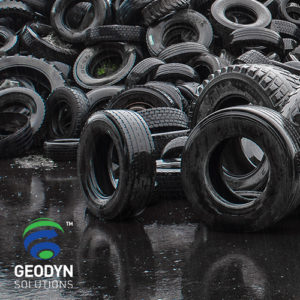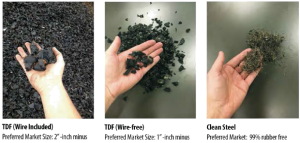The urgent need to address environmental degradation and climate change has ignited a revolution in how we handle waste. One of the most significant challenges in this battle against pollution and waste accumulation is dealing with discarded tires. According to the U.S. Environmental Protection Agency, we generate approximately 290 million waste tires each year. This colossal number represents a significant environmental concern if left unaddressed. However, innovators worldwide are now exploring groundbreaking methods to convert these discarded tires into valuable raw materials and commodities, ultimately aiding in the fight against climate change by reducing CO2 emissions.
The Problem with Discarded Tires
Tires are made from a complex mix of materials, including rubber, fabric, steel, and various chemical compounds, making them challenging to dispose of and recycle. Historically, they have been sent to landfills, dumped illegally, or incinerated, contributing significantly to environmental pollution.
Burning tires releases large amounts of CO2 and other harmful pollutants into the atmosphere, exacerbating climate change. Furthermore, tire dumps can become breeding grounds for disease-carrying mosquitoes and other pests, and pose a significant fire risk, which, when ignited, can be challenging to extinguish and emit toxic fumes.
The Tire Recycling Revolution
The growing awareness of the harmful effects of tire waste has led to the development of innovative solutions for repurposing discarded tires. These solutions not only transform waste into valuable commodities but also provide a more sustainable alternative that reduces CO2 emissions, contributing to the mitigation of climate change.
Pyrolysis: A Promising Solution
One such method is pyrolysis, a thermal decomposition process that breaks down tires into their base materials in an oxygen-free environment. This process is a promising solution because it prevents the release of harmful emissions and can effectively recover valuable materials from tires, such as carbon black, steel, and combustible gas that can be used for energy.
The oil produced during pyrolysis can also be refined and used as a low-grade fuel or further processed into other valuable products. The process, when performed under controlled conditions, significantly reduces the environmental impact compared to traditional tire disposal methods.
Devulcanization: Turning Old Tires Into New Rubber
Devulcanization is another innovative technique gaining traction. This process reverses vulcanization, a method that strengthens rubber by creating sulfur bridges between the rubber molecules. By effectively ‘uncooking’ the rubber, devulcanization makes it possible to reuse the rubber from old tires to produce new ones, or in various other rubber products, significantly reducing the need for new raw materials.
The Environmental and Economic Impact
Turning discarded tires into valuable raw materials and commodities through methods like pyrolysis and devulcanization has far-reaching environmental and economic benefits.
Carbon Emission Reduction: These methods minimize the amount of CO2 and other harmful pollutants released into the atmosphere compared to traditional disposal methods like incineration. Moreover, reusing the recovered materials reduces the need for new raw material production, thereby saving the energy that would have been used in their production and reducing the overall carbon footprint.
Resource Conservation: By extracting valuable resources like steel, oil, and carbon black from discarded tires, we can significantly reduce the demand for these raw materials, contributing to their conservation. Reusing rubber through devulcanization further reduces the need for virgin rubber production, saving on the energy-intensive process of harvesting and processing natural rubber.
Economic Growth: The process of converting waste tires into valuable commodities can create new industries and job opportunities. With the right infrastructure and investment, this sector could become a significant contributor to the green economy.



